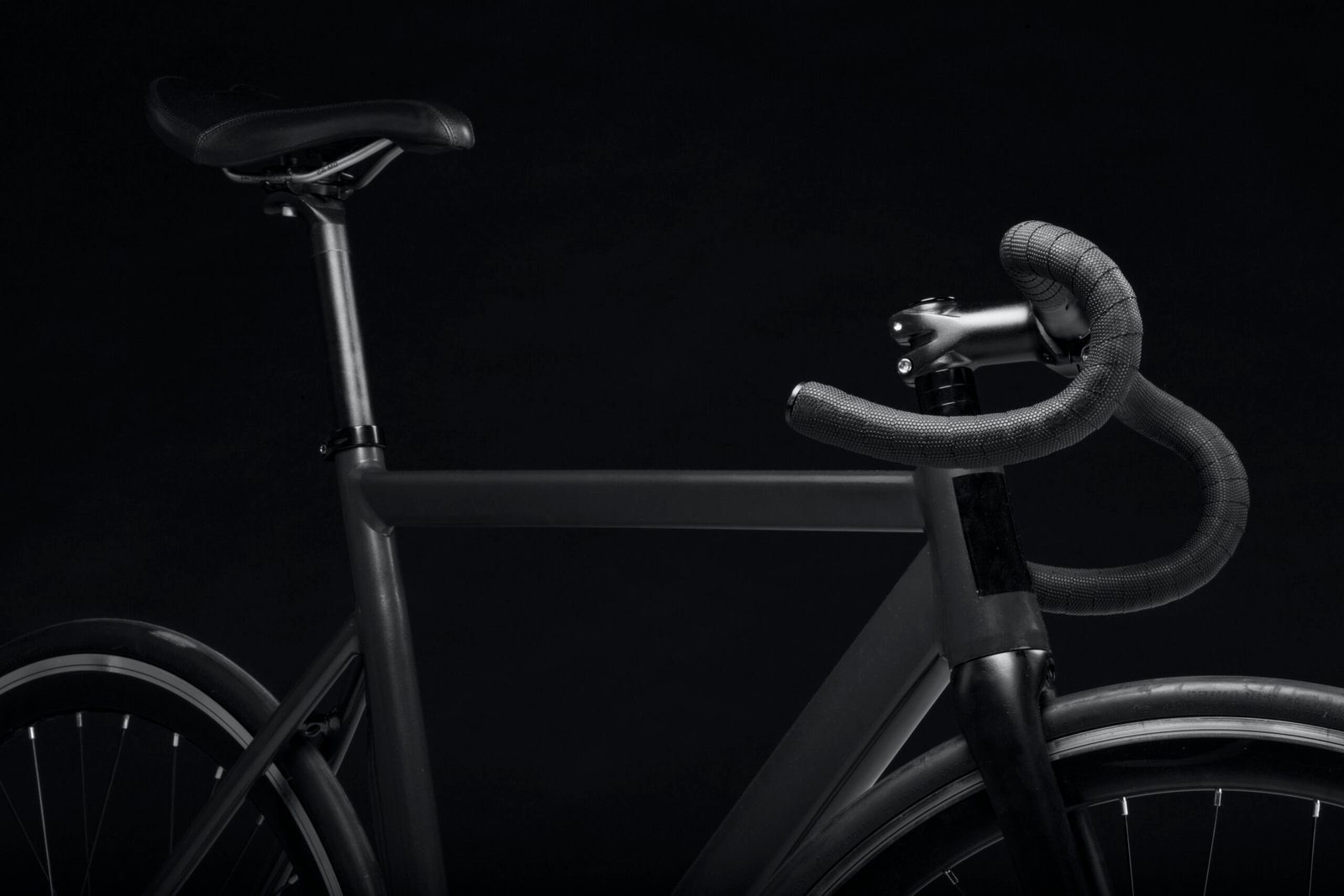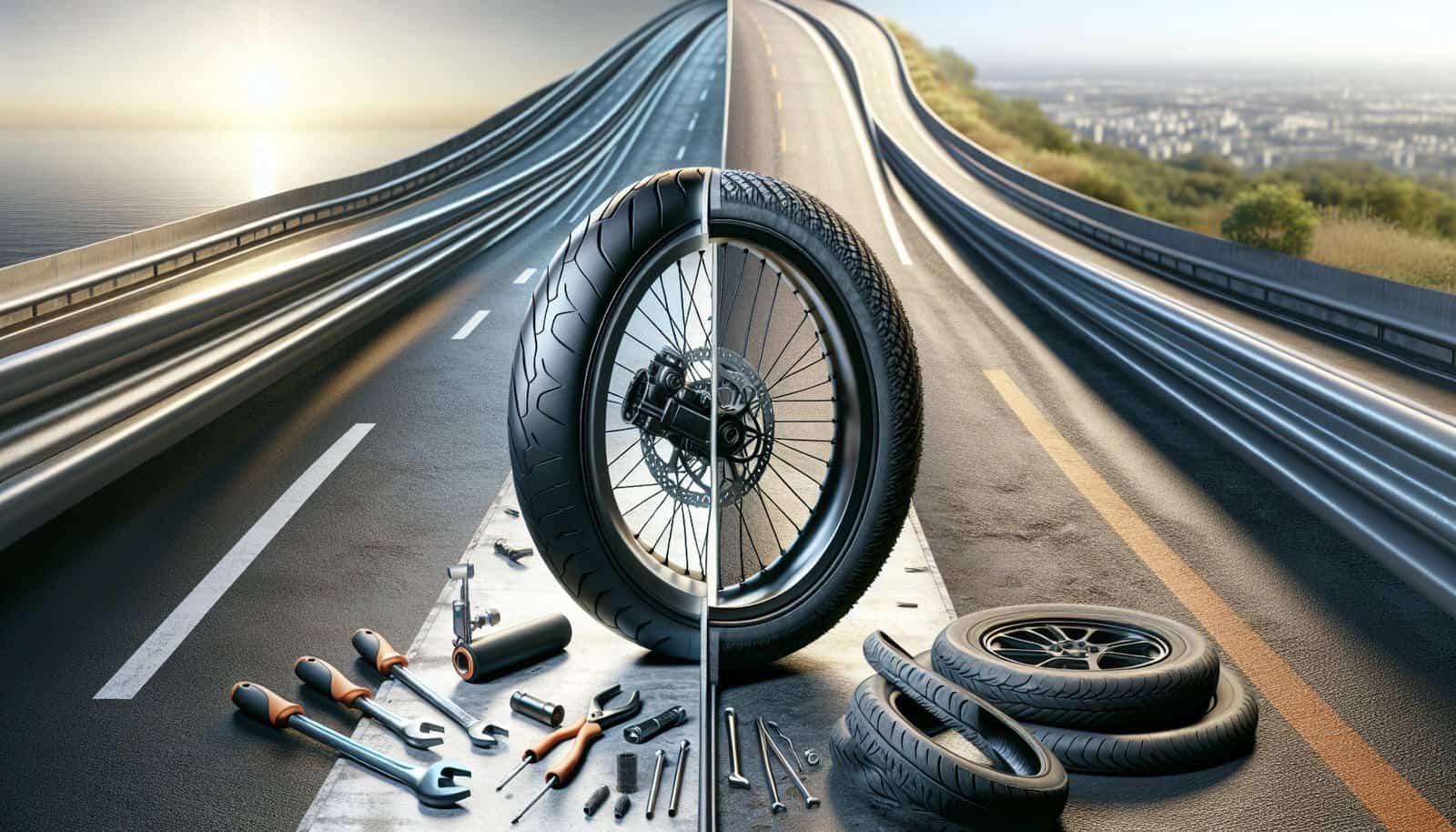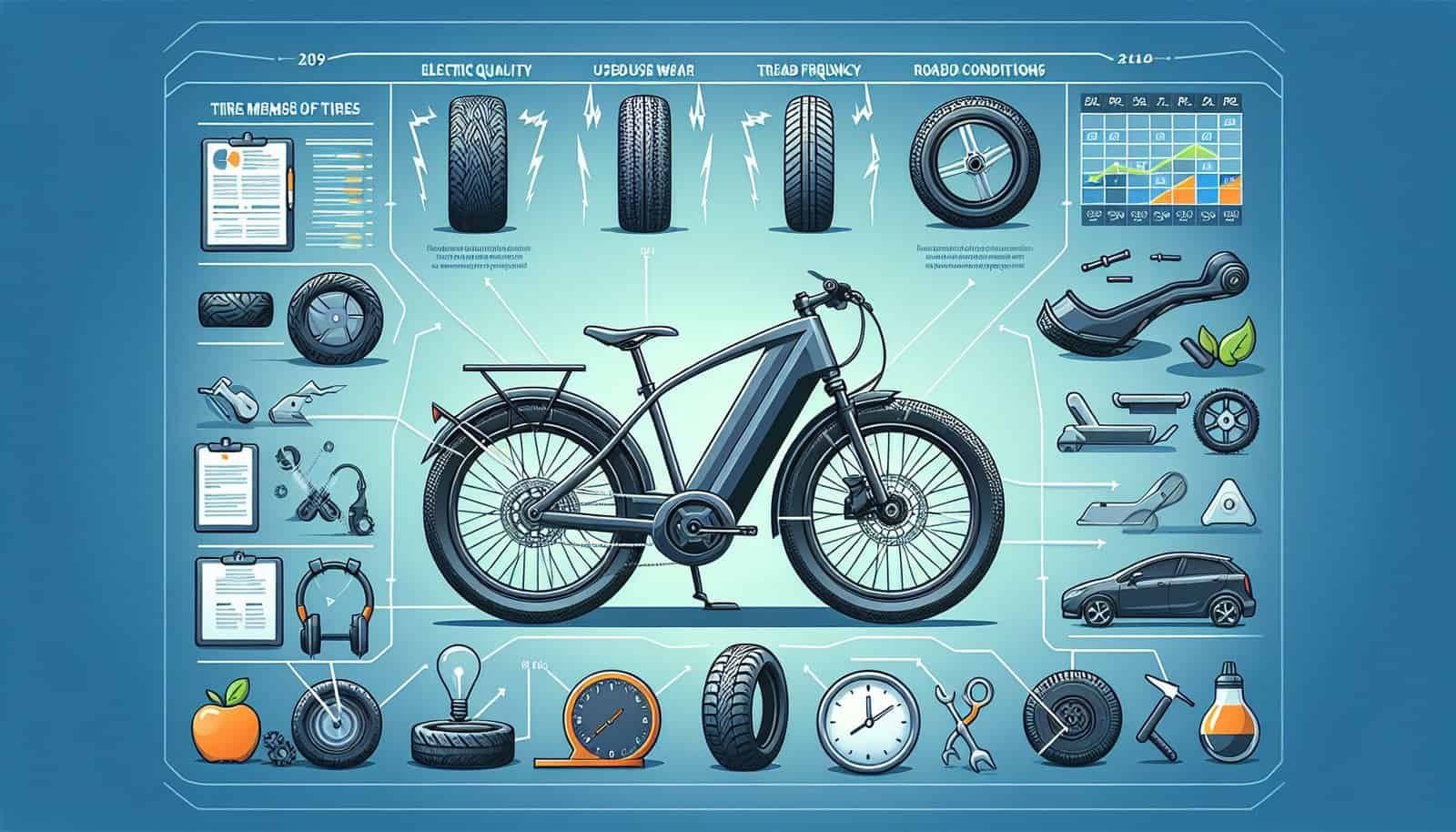Have you ever wondered how often you need to replace the tires on your electric bike? Well, this article will provide you with the answer you’ve been searching for. It’s important to keep your electric bike’s tires in good condition to ensure smooth and safe rides. In this article, we’ll discuss the average lifespan of electric bike tires, factors that can affect their durability, and signs that indicate it’s time for a replacement. So, let’s get started and make sure you’re equipped with the knowledge you need to keep your electric bike rolling smoothly!

Factors that influence tire lifespan
When it comes to the lifespan of electric bike tires, there are several factors that can significantly impact their longevity. It’s important to be aware of these factors so that you can properly maintain your tires and ensure their optimal performance and safety.
Tire quality
The quality of the tires you choose plays a crucial role in determining their lifespan. High-quality tires are often made with premium materials and advanced manufacturing techniques, making them more durable and resistant to wear and tear. On the other hand, low-quality tires may wear out quickly and may not perform well under various riding conditions.
Riding conditions
The conditions in which you ride your electric bike can have a significant impact on the lifespan of your tires. If you frequently ride on rough or uneven terrain, your tires may wear out faster compared to riding on smooth roads. Additionally, extreme weather conditions such as excessive heat or cold can also affect the durability of your tires.
Rider weight
The weight of the rider can put additional stress on the tires, potentially leading to faster wear. If you are a heavier rider, it’s important to choose tires that are specifically designed to support higher weight capacities. This will help ensure that your tires can withstand the extra load and last longer.
Tire pressure
Maintaining proper tire pressure is crucial for optimal tire performance and longevity. Riding with underinflated tires can cause increased rolling resistance and heat buildup, leading to accelerated tire wear. Conversely, overinflating your tires can result in a harsh ride and reduce the tire’s contact with the road surface, potentially causing uneven wear. Regularly checking and adjusting your tire pressure can help extend the lifespan of your tires.
Type of tire
The type of tire you choose can also influence its lifespan. Different tire designs and tread patterns are suited for specific riding conditions. For example, tires with a more aggressive tread pattern may provide better traction on off-road terrains but may wear out faster on smooth roads. Understanding your riding preferences and choosing the right type of tire can help maximize their longevity.
Average lifespan of electric bike tires
While there is no definitive answer to how long electric bike tires will last, several factors can help estimate their average lifespan.
Manufacturer recommendations
It’s essential to refer to the manufacturer’s recommendations regarding tire lifespan. Manufacturers often provide guidelines on how long their tires are expected to last under normal usage conditions. However, it’s important to note that these estimates may vary depending on the factors mentioned above.
Mileage estimate
Mileage is often used as a general indicator of how long a tire will last. Manufacturers may provide an estimated mileage range for their tires, which can give you a rough idea of their lifespan. However, it’s worth noting that the actual mileage can vary based on factors such as riding conditions, tire quality, and maintenance practices.
Time estimate
In addition to mileage, the age of the tire can also affect its lifespan. Over time, even if the tire has not reached its maximum mileage, the rubber may start to deteriorate, leading to reduced performance and safety. Manufacturers often recommend replacing tires after a certain number of years, even if the mileage has not been reached.
Signs that indicate tire replacement is necessary
While estimates and recommendations help give you an idea of when to replace your electric bike tires, it’s important to be able to identify signs that indicate tire replacement is necessary. Regular inspection can help you catch these signs early and ensure your safety on the road.
Tread wear indicator
One of the most common signs that your tires need to be replaced is the wear on the tread. Many tires have built-in tread wear indicators that become visible as the tire wears down. These indicators are typically small rubber bars located within the tread grooves. If the tread wear indicators become flush with the surface of the tread, it’s a clear sign that your tires have worn out and need to be replaced.
Visible cracks or bulges
Inspecting your tires for any visible cracks or bulges is also important. Cracks can develop over time due to aging or exposure to harsh weather conditions. These cracks pose a serious risk as they indicate weakened tire integrity and can lead to tire failure. Similarly, bulges or bumps on the sidewall or tread of the tire are signs of internal damage and should be addressed promptly.
Frequent punctures or flats
If you find yourself frequently dealing with punctures or flats, it may be a sign that your tires are no longer able to provide adequate protection against road debris or sharp objects. While punctures can sometimes be patched, frequent incidents may indicate that your tires have become too compromised and should be replaced.
Loss of grip or traction
As tires wear down, they may lose their grip or traction on the road. This can result in reduced control and stability, especially in wet or slippery conditions. If you notice a significant decrease in your bike’s grip or traction, it’s a strong indication that your tires have worn down and need to be replaced.
Importance of regular tire inspection
Regular tire inspection is crucial for maintaining the safety, performance, and efficiency of your electric bike. By regularly inspecting your tires, you can catch any issues early on and prevent potential accidents or damage.
Safety
The safety of both you and your bike greatly depends on the condition of your tires. Worn-out or damaged tires can compromise your ability to control your bike, especially during quick maneuvers or in hazardous conditions. Regularly inspecting your tires allows you to identify potential safety risks and take the necessary actions to address them promptly.
Performance
Tire condition directly impacts your bike’s overall performance. Well-maintained tires with proper tread and inflation levels provide optimal grip, traction, and handling. Regular inspections help ensure that your tires are in good condition, allowing you to enjoy smooth rides and better maneuverability.
Efficiency
Properly maintained tires can also contribute to the efficiency of your electric bike. Underinflated or worn-out tires can increase rolling resistance, requiring more effort from the motor and draining your battery faster. By regularly inspecting and maintaining your tires, you can optimize your electric bike’s efficiency and extend its battery life.

When to replace tires based on tread wear
Tire tread wear is a key indicator of when it’s time to replace your electric bike tires. Understanding how to measure tread wear and the minimum tread depth requirements will help you determine when it’s time for replacement.
Tire tread depth measurement
Measuring the tread depth of your tires is a simple and effective way to gauge their wear. The tread depth refers to the distance between the outermost part of the tread and the bottom of the grooves. To measure the tread depth, you can use a tread depth gauge or simply insert a penny into the groove with Lincoln’s head facing down. If you can see the top of Lincoln’s head, it’s a sign that the tread is too worn and replacement is necessary.
Minimum tread depth requirements
Different countries and regions may have specific regulations regarding the minimum tread depth requirement for tires. In the United States, for example, it is recommended to replace tires when the tread depth reaches 2/32 of an inch (1.6 mm). However, it’s worth noting that this is the minimum requirement, and for optimal performance and safety, it is often recommended to replace tires when the tread depth reaches 4/32 of an inch (3.2 mm) or even earlier for certain riding conditions.
How to properly maintain electric bike tires
Proper tire maintenance is essential for maximizing the lifespan of your electric bike tires and ensuring their optimal performance. By following these maintenance practices, you can keep your tires in great shape and avoid premature replacement.
Proper inflation
Maintaining proper tire pressure is critical for tire performance and longevity. Underinflated tires can cause excessive wear and reduce efficiency, while overinflated tires can result in a harsh ride and decreased traction. Make sure to regularly check your tire pressure using a reliable gauge and adjust it to the manufacturer’s recommended levels. This will not only extend the lifespan of your tires but also improve your overall riding experience.
Regular cleaning
Keeping your tires clean can help prevent the buildup of dirt, debris, and road grime, which can potentially damage the tread and sidewalls. Regularly washing your tires with mild soap and water, and scrubbing them gently with a soft brush or sponge can help maintain their appearance and prolong their lifespan.
Avoiding excessive wear
Certain riding habits can accelerate tire wear, reducing their lifespan. Avoid harsh braking and sudden acceleration, as these can cause excessive strain on the tires. Additionally, be cautious when navigating rough terrains or road hazards that could potentially damage the tires. By riding responsibly and avoiding unnecessary wear, you can extend the life of your electric bike tires.
Correct storage
If you store your electric bike for an extended period, it’s essential to properly prepare and store the tires. Clean the tires thoroughly, ensure they are dry, and store them in a cool, dry, and well-ventilated area. Avoid storing the tires near heat sources or in direct sunlight, as excessive heat can cause rubber degradation.

Factors to consider when selecting replacement tires
When selecting replacement tires for your electric bike, there are several factors to consider to ensure the optimal performance and longevity of your new tires.
Tire size
Choosing the correct tire size is crucial, as it directly affects your bike’s handling and overall performance. Refer to your bike’s manual or consult with a professional to determine the appropriate tire size for your specific model. Installing tires that are too large or too small can lead to safety issues and affect the accuracy of your bike’s speedometer and odometer.
Tread pattern
Consider the tread pattern that best suits your riding needs. Tread patterns vary and are designed to provide optimal traction on different terrains. For example, if you primarily ride on roads, a slick or semi-slick tread pattern may be suitable. On the other hand, if you frequently ride off-road or on trails, a more aggressive tread pattern can provide better grip and control.
Type of terrain
The terrain in which you mostly ride should heavily influence your choice of replacement tires. If you frequently ride on paved roads or smooth surfaces, tires with a lower rolling resistance may be more suitable, enhancing your electric bike’s efficiency. Conversely, if you venture off-road or encounter rough terrains, selecting tires with more aggressive tread patterns and wider profiles can offer better traction and stability.
Weight capacity
Consider the weight capacity of the replacement tires to ensure that they can adequately support both the weight of your electric bike and the rider. Choosing tires with a weight capacity that matches or exceeds your bike’s requirements is important for both safety and optimal tire performance.
Durability
Opt for tires that are known for their durability and resistance to wear and tear. Look for those made with high-quality materials and advanced construction techniques. While these tires may come at a higher initial cost, they often prove to be more cost-effective in the long run, as they require less frequent replacements.
Rolling resistance
Consider the rolling resistance of the replacement tires, as this can greatly impact your electric bike’s range and efficiency. Lower rolling resistance tires reduce the effort required to keep the bike moving, allowing for longer rides and improved battery life. However, it’s important to strike a balance between low rolling resistance and other desirable qualities such as grip and traction.
Cost considerations of tire replacement
When it comes to tire replacement for your electric bike, cost is a factor that you need to take into account. While cheaper replacement tires may initially seem like a cost-effective option, they may wear out faster and require more frequent replacements, ultimately leading to higher long-term costs.
Price range
Replacement tire prices can vary greatly depending on the brand, quality, and type of tire. It’s important to set a budget range and consider the cost within that range while also considering the desired quality and performance.
Long-term savings
Investing in higher-quality and more durable tires may initially seem pricier, but it can often result in long-term savings. These tires tend to last longer, reducing the frequency of replacements and associated costs. Additionally, they often offer improved performance and safety, delivering a more enjoyable riding experience in the long run.

Benefits of upgrading to higher quality tires
Upgrading to higher-quality tires for your electric bike can bring a range of benefits that go beyond just longevity.
Improved performance
Higher-quality tires are often designed to provide better overall performance. They may offer improved grip, traction, and control, allowing for smoother rides and enhanced maneuverability. With better tires, you can confidently navigate various terrains and enjoy a more comfortable and enjoyable biking experience.
Enhanced safety
Investing in higher-quality tires can significantly enhance your safety on the road. These tires are often engineered with advanced technologies and materials that provide better puncture resistance, improved sidewall durability, and enhanced traction in both wet and dry conditions. By choosing tires known for their safety features, you can ride with peace of mind knowing that you have optimal control and protection.
Longer lifespan
Perhaps the most apparent benefit of upgrading to higher-quality tires is their longer lifespan. These tires are built to withstand the rigors of daily riding and are less prone to premature wear and damage. By investing in tires known for their durability, you can enjoy extended usability, reducing the need for frequent replacements.
Conclusion
When it comes to the lifespan of electric bike tires, several factors come into play. The quality of the tires, riding conditions, rider weight, tire pressure, and type of tire all contribute to how long your tires will last. It’s important to regularly inspect your tires for signs of wear, and to replace them promptly when necessary. Proper tire maintenance, including proper inflation, regular cleaning, and avoiding excessive wear, can help prolong the lifespan of your tires. When selecting replacement tires, consider factors such as tire size, tread pattern, type of terrain, weight capacity, durability, and rolling resistance. While higher-quality tires may come at a higher initial cost, they often offer improved performance, enhanced safety, and longer lifespans, resulting in long-term savings. By taking these factors into consideration and properly maintaining your electric bike tires, you can ensure a longer lifespan, optimal performance, and an enjoyable riding experience.


